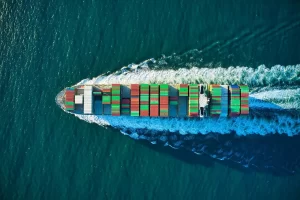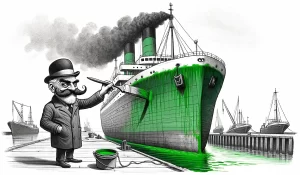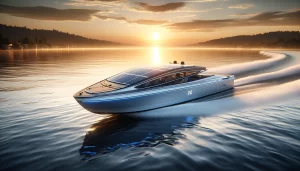Maritime decarbonization won’t happen without adoption of low-carbon energy technologies. Unfortunately, innovative energy technologies aren’t adopted all at once. Instead, technologies follow a adoption curve, which is the cumulative rate at which a user-group adopts the technology over time.[1] This trend has been observed across numerous industries with countless products. It is so common that there are standard names for the five phases of the adoption curve, based upon the type of adopter and how long it takes for them to start using the new technology: innovators, early adopters, early majority, late majority, and laggards. [2]
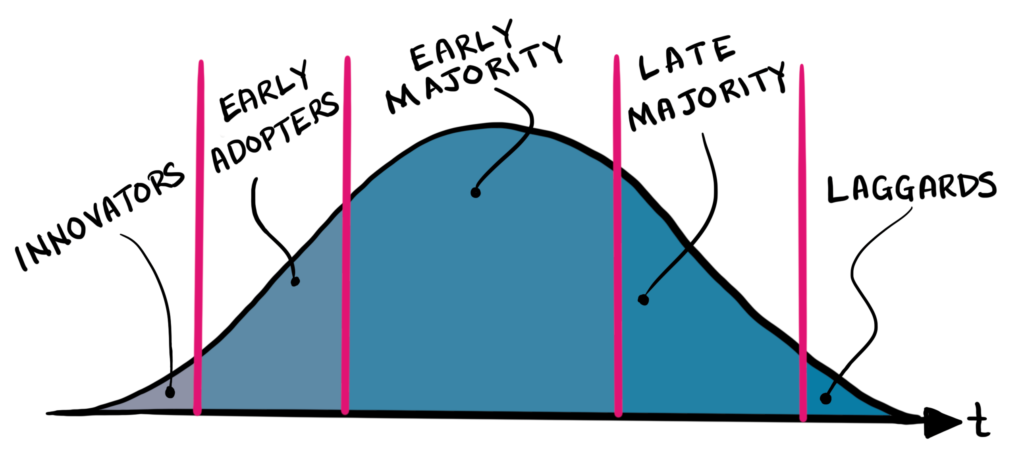
The speed at which a technology moves through these phases depends on numerous factors. For example a recent survey of 750 executives by the Economist Intelligence Unit finds that some of the biggest challenges to technology adoption include “employee skills and lack of senior management awareness.”[3][4] These challenges are solvable. For instance, many management professionals believe that one surefire way to facilitate technology adoption is by “building the new technology into the routines and rhythms of the workday as soon as possible.”[5]
Maritime decarbonization technologies must quickly pass through their respective adoption curves if the industry wants to achieve International Maritime Organization emissions reduction goals for 2030 and 2050. More innovators and early adopters are needed in maritime leadership roles to make this happen. To produce more changemakers, we need to provide mariners with early exposure and ample training opportunities on new energy technologies.
Merchant Mariner Changemakers
The merchant marine workforce is often split into two groups: licensed and unlicensed. Licensed mariners must go through numerous years of advanced training and pass rigorous examinations to acquire a license from the U.S. Coast Guard that authorizes them to operate commercial vessels as a deck or engine officer. Unlicensed mariners make up the critical majority of the workforce and the roles they fill generally require less training and experience, but are no less important to the industry.
Licensed mariners assume many leadership and management roles in the maritime industry, both on ships and ashore, and they make many of the key business decisions. These are the changemakers for the maritime industry and where decarbonization training would be most impactful.
Maritime Academies and Decarbonization
In the U.S. there are seven maritime academies that produce about 95 percent (or approximately 1,100 graduates) of the country’s total licensed mariner workforce each year.[6] Of the seven academies, six are state-funded and located in Maine, Massachusetts, New York, Texas, California, and Michigan. The seventh, the U.S. Merchant Marine Academy (USMMA) at Kings Point, New York, is the only one that is federally-funded.
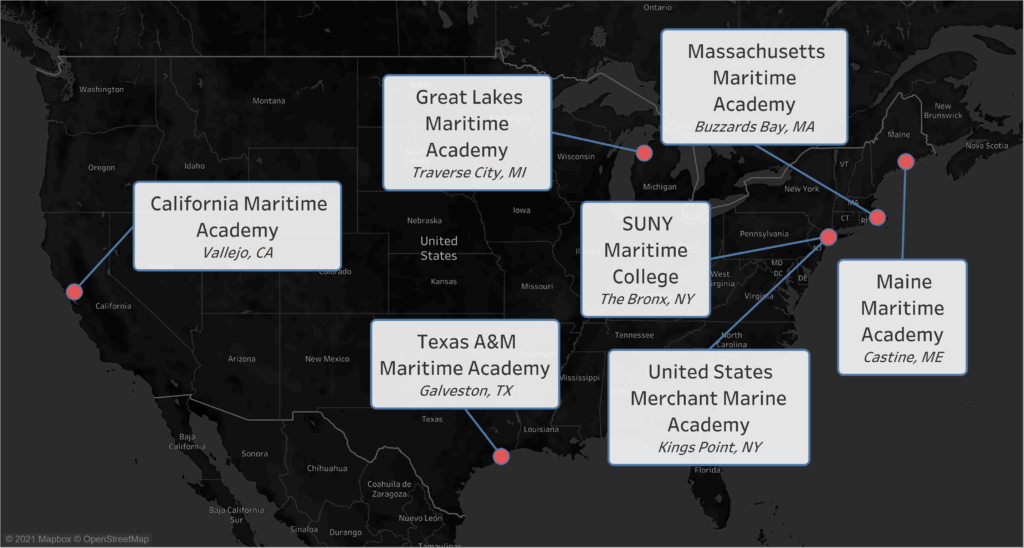
While there has been a slow and steady decline over the past three decades in the number of mariners, a study produced in 2015 (commissioned by the U.S. Departments of Labor, Education, and Transportation) estimates that there will be 74,000 maritime job openings (roughly split between licensed and unlicensed positions) between 2012 and 2022.[7] Given this labor demand, the maritime academies have a critical role in not only supplying capable and skillful mariners, but also in educating them on the latest technologies driving maritime decarbonization.
Maritime Decarbonization Curriculum
Sadly, maritime decarbonization curriculum at most of the maritime academies is lacking. None of the academies have required classes for all students that are focused on the environmental aspects of shipping. Most of the academies do have at least one course that investigates the environmental aspects of shipping or relevant renewable energy technologies. Judging by current course catalogs, Massachusetts and Maine Maritime Academies have the most courses and are the only ones with dedicated majors or minors for clean energy in maritime.
The other academies have one or two elective courses, but these are by definition optional and thereby reach a limited number of students. One reason the academies might not require such courses is simply because clean energy training is not needed for obtaining a USCG license. U.S. license requirements are set by the USCG and adhere to an international regulation called the Standards for Training, Certification, and Watchkeeping (STCW). These STCW requirements stipulate a common baseline for mariner training and the academies devote a substantial portion of their curriculum to meeting these requirements so that students can obtain licenses at graduation. With an already demanding core curriculum for STCW requirements, squeezing in additional required courses for sustainable shipping practices isn’t easy, but the academies should elevate these courses to the same level as those needed for STCW requirements.
Training Vessels – Teaching the Status Quo?
Classroom training isn’t the only way the maritime academies can expose students to new energy technologies. Each academy hosts a training ship used to provide hands-on training to the students. Nearly every student at a given maritime academy will spend time on the school’s training ship before they graduate, which makes these vessels ideal loci for exposing students to new technologies. However, as of this writing, the average age of these ships is more than 37 years.[9] These vessels are so old that they are no longer representative of what students will see in industry and they are in dire need of replacement.
Fortunately, the U.S. Department of Transportation’s Maritime Administration (MARAD) is spending approximately $1.5 billion replacing five of these decrepit training ships with “new, purpose-built training vessels that will better meet the academies training needs while also providing the U.S. with ships that can support disaster response and other critical national needs.”[10] These National Security Multi-Mission Vessels, or NSMVs, could meet other “critical national needs” such as rapid decarbonization in the global fight against climate change.
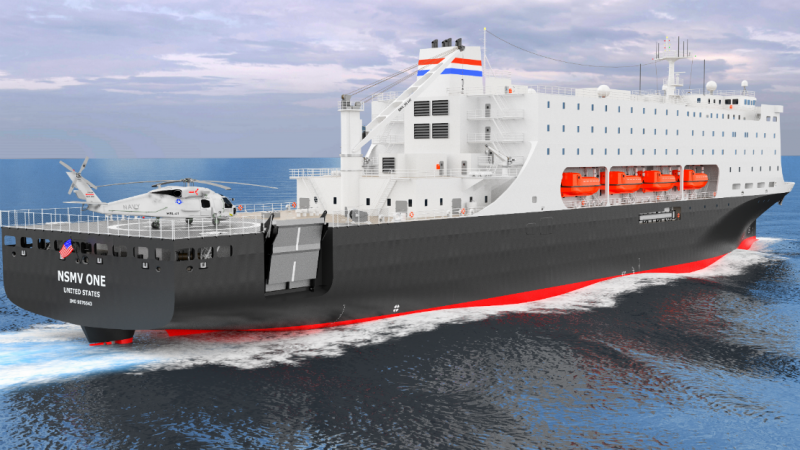
The NSMVs could have been fitted with state-of-art low- and zero-carbon energy technologies such as large-scale marine batteries, fuel cells, or even supplemental wind propulsion. Instead, they feature diesel-electric propulsion systems and operate on fossil fuels. This was a missed opportunity for training our future mariners on the latest energy systems.
But perhaps the NSMV design can be modified for future builds, or the ships can be retrofitted, to accommodate newer technologies. If the NSMVs were equipped with the latest low-carbon energy technologies these vessels would be invaluable training aids for future maritime leaders.
The U.S. maritime academies have a pivotal role in shaping the maritime energy transition. The academies produce the majority of the nation’s maritime leaders who go on to make critical business decisions within the industry. If we train these future maritime leaders on the technologies we want to see in industry, whether through required courses or state-of-the-art training vessels, they will become the innovators and early adopters we desperately need to rapidly decarbonize.
References
[1] https://www.stratechi.com/adoption-curves/
[2] https://www.ou.edu/deptcomm/dodjcc/groups/99A2/theories.htm
[3] Why Do Your Employees Resist New Tech?, Harvard Business Review
[4] Tailored with Technology. The Economist Intelligence Unit. 2019.
[5] Convincing Skeptical Employees to Adopt New Technology, Harvard Business Review
[6] Buzby: Declining Ship Numbers, Opportunities Causing Merchant Marine Talent Loss, USNI News
[7] Strengthening Skills Training and Career Pathways across the Transportation Industry. 2015
[8] The United States Merchant Marine Academy: Serving the Nation
[9] Maine Maritime may get shortchanged on new training ship, Workboat

